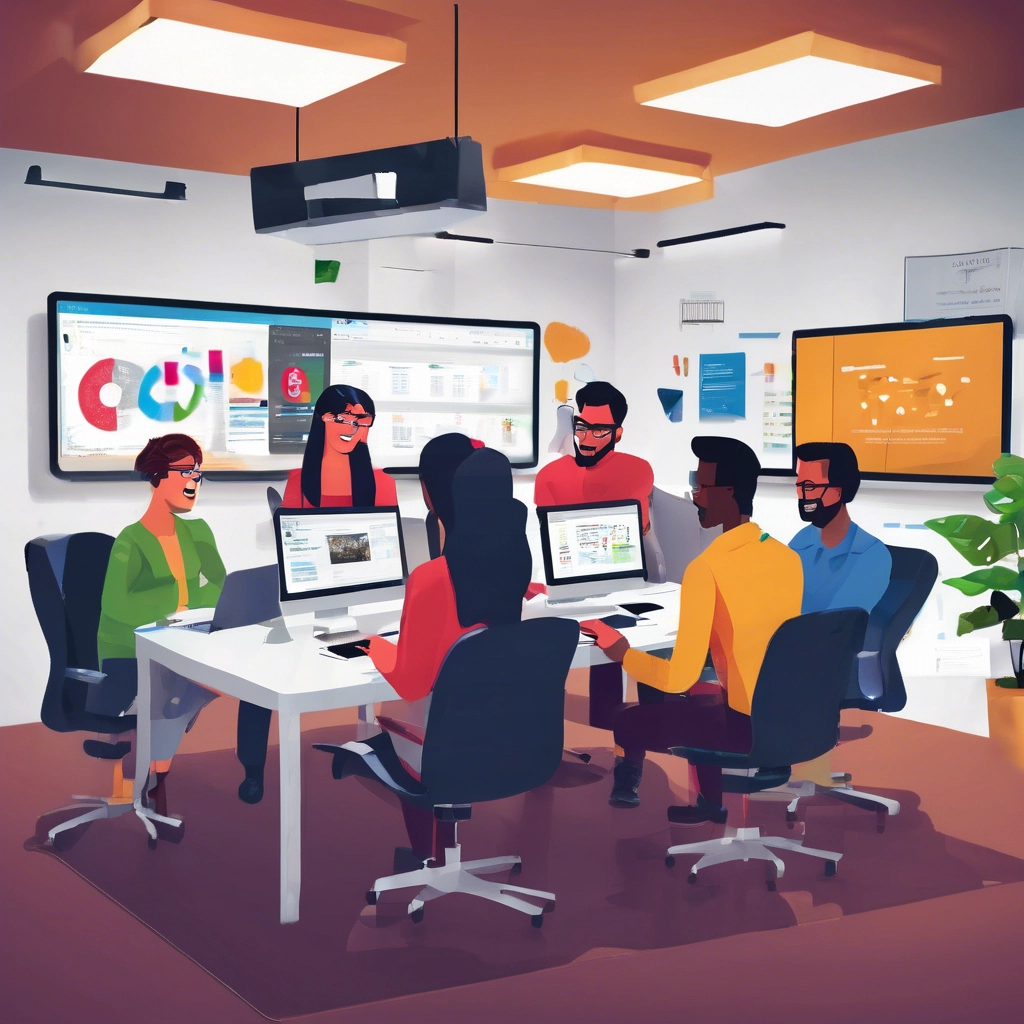
In today’s digital age, a website is often the first point of contact between a business and its potential customers. Whether you’re running an e-commerce store, a service-based business, or a personal blog, your website’s design and functionality are crucial to establishing your brand’s credibility and achieving business success. Web design and development play a pivotal role in shaping the online experience for visitors, impacting everything from usability and performance to aesthetics and brand perception.
In this blog, we’ll explore the key aspects of web design and development, how they work together to create a seamless user experience, and why investing in professional web design and development services can take your online presence to the next level.
What is Web Design?
Web design refers to the process of planning and creating the layout, structure, and visual elements of a website. It’s about making sure that the website is visually appealing, easy to navigate, and aligned with the brand’s identity. The main focus of web design is to ensure that users have a pleasant and intuitive experience when visiting the website. Key elements of web design include:
User Interface (UI) Design
UI design focuses on the layout of the website, including how elements like buttons, forms, and navigation menus are arranged. A well-designed UI should guide the user smoothly through the website and encourage them to take action, such as making a purchase or filling out a contact form.User Experience (UX) Design
UX design is all about ensuring the website meets the needs of its visitors. It focuses on the overall experience, including the ease of navigation, load speed, and how well the website adapts to different devices (mobile, tablet, desktop). A good UX design should be seamless, intuitive, and engaging, providing the user with exactly what they are looking for without frustration.Visual Design
Visual design refers to the aesthetics of the website, including color schemes, typography, imagery, and overall layout. Good visual design helps to establish brand identity, create an emotional connection with visitors, and enhance the user experience by guiding them to important content.
What is Web Development?
Web development involves the process of building and maintaining the technical aspects of a website. While web design focuses on the look and feel of the website, web development ensures that the site functions correctly behind the scenes. Web development includes:
Front-End Development
Front-end development is responsible for the client-facing part of the website, which is what users interact with directly. This includes creating the layout, structure, and interactive elements of the website using languages like HTML, CSS, and JavaScript. Front-end developers ensure that the website is responsive (adapts to various screen sizes) and interactive (allows users to engage with content).Back-End Development
Back-end development deals with the server-side of the website, including databases, server configurations, and the logic that powers the website. Back-end developers use languages like PHP, Python, Ruby, and frameworks like Laravel or Node.js to build the infrastructure that enables the website to function smoothly. The back-end is responsible for processing data, handling user requests, and ensuring that content is delivered to the front-end properly.Full-Stack Development
Full-stack developers handle both front-end and back-end development. They are proficient in both client-side and server-side technologies and can build end-to-end solutions for websites and applications. Full-stack developers play an important role in creating efficient and scalable web systems.


Why is Web Design and Development Important for Your Business?
First Impressions Matter
Your website is often the first interaction a potential customer will have with your business. A well-designed, user-friendly website gives a positive first impression and helps establish trust and credibility. A poorly designed or hard-to-navigate website, on the other hand, can drive visitors away and damage your brand’s reputation.Mobile Responsiveness
With more people browsing the internet on mobile devices than ever before, having a responsive website is essential. Web development ensures that your site functions properly on all devices, providing a seamless experience across desktops, tablets, and smartphones. Mobile-friendly websites are also favored by search engines, which can improve your site’s SEO ranking.Improved SEO Performance
Good web design and development go hand in hand with search engine optimization (SEO). A well-structured website with clean code, fast load times, and mobile optimization helps improve your search engine ranking, making it easier for potential customers to find you online.Enhanced User Experience
The user experience (UX) is one of the most important aspects of web design and development. Websites that are easy to navigate, fast, and visually appealing keep visitors engaged and increase the likelihood of conversions. Whether your goal is to sell products, generate leads, or provide information, a good UX design will make it easier for visitors to achieve their goals on your website.Increased Conversions and Sales
An effective web design and development strategy focuses on the ultimate goal of increasing conversions. A well-designed website with clear calls-to-action (CTAs), user-friendly navigation, and optimized checkout processes can help turn visitors into customers. Conversion rate optimization (CRO) techniques like A/B testing and analyzing user behavior can also be incorporated into the web development process to ensure the website is as effective as possible at driving sales.Scalability and Flexibility
As your business grows, your website needs to evolve with it. Professional web development ensures that your website is scalable, meaning it can handle increased traffic, new features, and additional content without compromising performance. Custom web development solutions can be tailored to your specific business needs, ensuring that the website can adapt to changes and continue to support your growth.
Key Features to Consider for Your Website
When designing and developing your website, here are some important features to consider:
Content Management System (CMS)
A CMS like WordPress, Shopify, or Joomla enables you to easily manage and update your website’s content without the need for technical skills. With a user-friendly CMS, you can update product listings, publish blog posts, and make changes to your website as your business grows.E-commerce Capabilities
If you’re running an online store, integrating e-commerce functionality into your website is a must. Features like product catalogs, shopping carts, secure payment gateways, and inventory management systems are essential for a smooth online shopping experience.Fast Loading Speed
Website speed is a crucial factor for both user experience and SEO. Websites that load quickly have lower bounce rates and higher engagement levels. Optimizing your website’s performance through efficient coding, image compression, and caching can improve load times.Security Features
Security is a major concern for online businesses. Make sure your website is protected with HTTPS, strong encryption, and secure login processes. Regular updates and monitoring can help protect your site from potential vulnerabilities.


